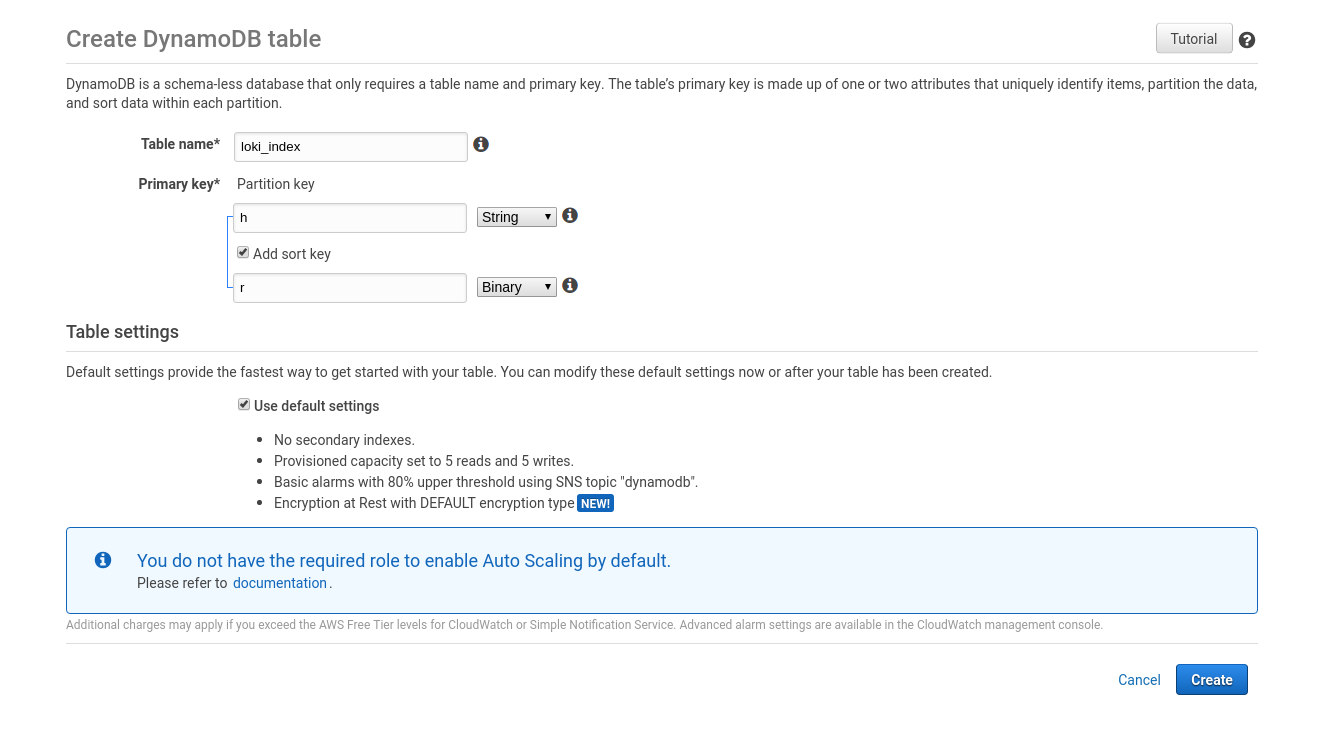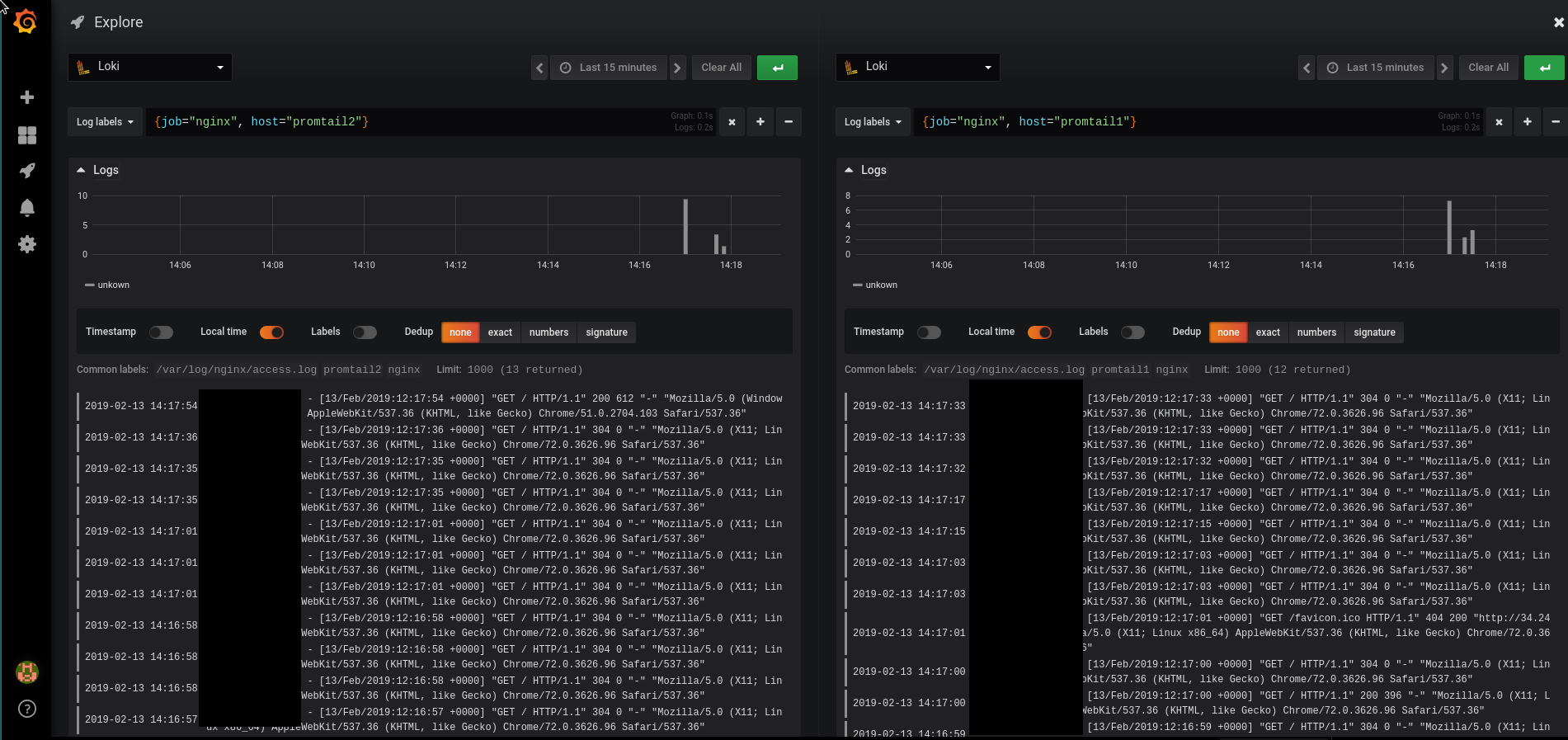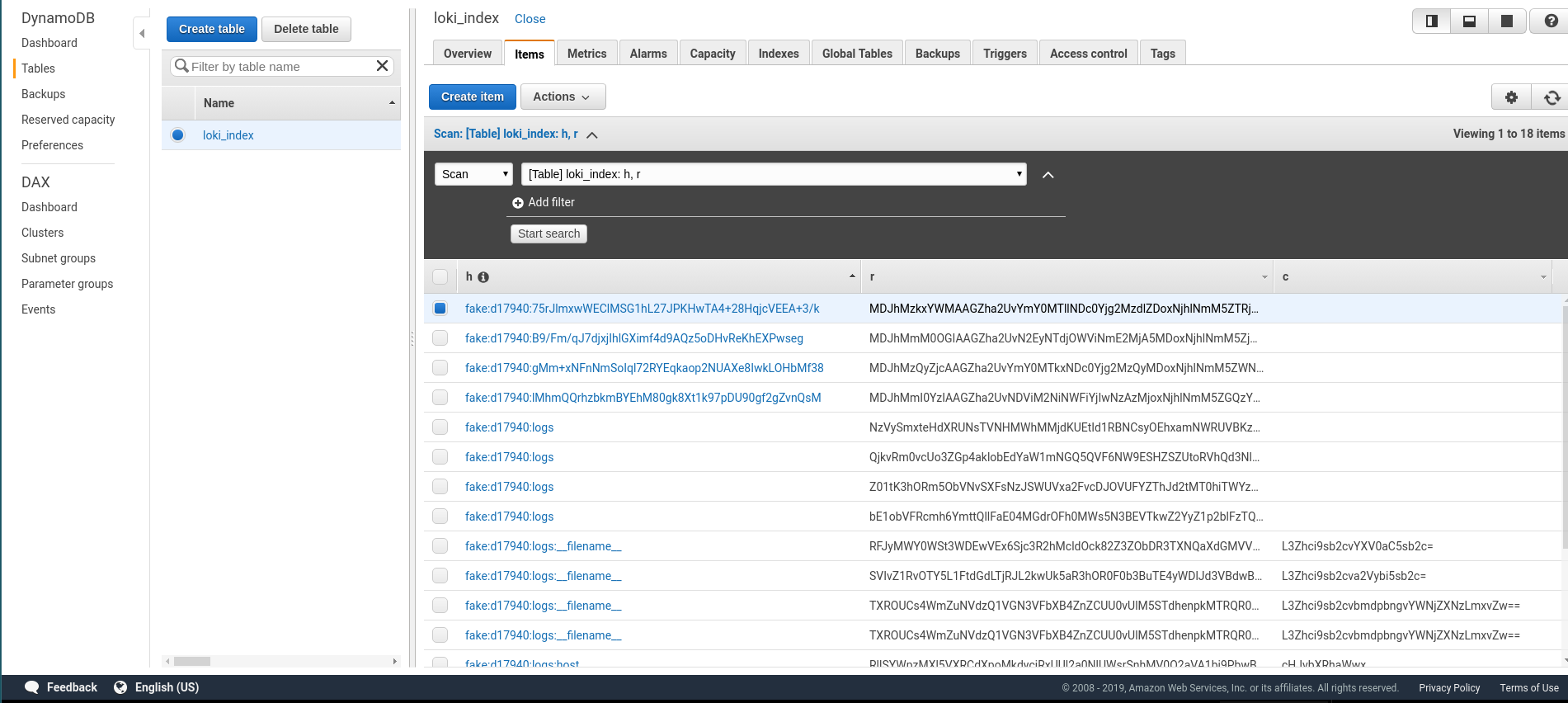 Let’s proceed with the Loki system.
Let’s proceed with the Loki system.
First post of this series – Grafana Labs: Loki – logs collecting and monitoring system and the second one – Grafana Labs: Loki – distributed system, labels and filters.
There is the Grafana’s Slack community with the dedicated #loki channel where you can ask for some assist (and it’s really helpful).
The task for today is to configure Loki to use AWS S3 as persistent storage for data and AWS DynamoDB to store indexes used by Loki.
Some documentation available here>>>.
Contents
Storage config
With the default configuration – Loki will store data inside its container in the /tmp/loki directory:
[simterm]
root@ip-172-31-38-97:/home/admin# docker exec -ti admin_loki_1 ls -l /tmp/loki/ total 24 drwxr-xr-x 2 root root 20480 Feb 11 11:32 chunks drwxr-xr-x 2 root root 4096 Feb 7 12:43 index
[/simterm]
And settings are configured in the storage_config section:
[simterm]
root@ip-172-31-38-97:/home/admin# docker exec -ti admin_loki_1 cat /etc/loki/local-config.yaml | grep -A 5 storage_config
storage_config:
boltdb:
directory: /tmp/loki/index
filesystem:
directory: /tmp/loki/chunks
[/simterm]
What we have to do now – is to create an AWS S3 bucket, AWS DynamoDB table and to update the Loki’s configuration.
AWS S3
As AWS S3 creation is the most simple part – let’s start here.
The creation process is out of the scope of this post – you can find examples here>>> and here>>>.
Create a bucket and update Loki’s configuration on the loki.setevoy.org.ua host (created in the previous post) – change the storage_config section here:
...
storage_config:
boltdb:
directory: /tmp/loki/index
# filesystem:
# directory: /tmp/loki/chunks
aws:
s3: s3://AKI***PHA:0/W***WFN@eu-west-1/logger-loki-poc
limits_config:
enforce_metric_name: false
Don’t think it will work right now – but let’s try:
[simterm]
root@ip-172-31-38-97:/home/admin# docker-compose -f loki-compose.yml up Creating network "admin_default" with the default driver Creating admin_loki_1 ... done Attaching to admin_loki_1 loki_1 | level=info ts=2019-02-11T12:41:36.891679717Z caller=loki.go:122 msg=initialising module=server loki_1 | level=info ts=2019-02-11T12:41:36.892371631Z caller=gokit.go:36 http=[::]:3100 grpc=[::]:9095 msg="server listening on addresses" loki_1 | level=info ts=2019-02-11T12:41:36.892882132Z caller=loki.go:122 msg=initialising module=overrides loki_1 | level=info ts=2019-02-11T12:41:36.893212712Z caller=override.go:33 msg="per-tenant overides disabled" loki_1 | level=info ts=2019-02-11T12:41:36.893613967Z caller=loki.go:122 msg=initialising module=store loki_1 | level=error ts=2019-02-11T12:41:36.894199922Z caller=main.go:41 msg="error initialising loki" err="error initialising module: store: error creating object client: mkdir : no such file or directory" admin_loki_1 exited with code 1
[/simterm]
Well – okay, let’s go to the DynamoDB.
DynamoDB
Check the documentation here about fields used by Loki – operations.md.
Create a new table with the Primary key called “h” name and String type and the Sort key named “r” of the Binary type (don’t ask me why such a names 🙂 ):
Update your Loki’s config loki-conf.yml– now it has to look like this:
auth_enabled: false
server:
http_listen_port: 3100
ingester:
lifecycler:
address: 0.0.0.0
ring:
store: inmemory
replication_factor: 1
chunk_idle_period: 15m
#schema_config:
# configs:
# - from: 0
# store: boltdb
# object_store: filesystem
# schema: v9
# index:
# prefix: index_
# period: 168h
schema_config:
configs:
- from: 0
store: aws
object_store: aws
schema: v9
index:
prefix: loki_index
period: 0
storage_config:
# boltdb:
# directory: /tmp/loki/index
# filesystem:
# directory: /tmp/loki/chunks
aws:
s3: s3://AKI***PHA:0/W***WFN@eu-west-1/logger-loki-poc
dynamodbconfig:
dynamodb: dynamodb://AKI***Y7A:lTH***zg4@eu-west-1
limits_config:
enforce_metric_name: false
Note: the SECRET_KEY parser doesn’t work(ed?) properly and deletes “0/” and “/” symbols so had to generate new ACCEES:SECRETkey pair. Issue: https://github.com/grafana/loki/issues/310
Start the service:
[simterm]
root@ip-172-31-38-97:/home/admin# docker-compose -f loki-compose.yml up -d Starting admin_loki_1 ... done
[/simterm]
Wait a couple of minutes and check your Grafana (here is the Split feature used):
Okay – the data is present, but the S3 bucket is empty… And no indexes in the DynamoDB…
Also, there are errors in Loki’s container output:
loki_1 | level=error ts=2019-02-13T12:05:57.928786555Z caller=flush.go:118 org_id=fake msg=”failed to flush user” err=”NoCredentialProviders: no valid providers in chain. Deprecated.\n\tFor verbose messaging see aws.Config.CredentialsCha
inVerboseErrors”
Solved it by using the same ACCESS:SECRET key pair for both S3 and DynamoDB configs.
And data in the S3 and DynamoDB appeared after ~ 15 minutes:
AWS S3:
[simterm]
$ aws s3 ls s3://logger-loki-poc/fake --profile loki-poc --recursive 2019-02-13 14:32:18 1048 fake/45b3cb5abb207032:168e6c9dd3c:168e6c9e4c2:fb4b2bc6 2019-02-13 14:32:18 419 fake/7a257c9eb6a62090:168e6c9f488:168e6c9f48b:a1a29aa7 2019-02-13 14:32:48 688 fake/bf4191474b863420:168e6c9ecc1:168e6ca72f7:deeb5910 2019-02-13 14:33:18 730 fake/bf419e474b8637ed:168e6c9e4c1:168e6cac1ac:824c11f9
[/simterm]
All good so far.
P.S. After all – I’m using Loki with my current Monitoring Production stack, just with two Grafana’s instances – one is the current Stable version for Prometheu’s and CloudWatch dashboards and the second one – with the Grafana 6.0 Beta version for logs. Will “merge” them after Grafana 6.0 will be released:
admin@monitoring-production:~$ cat /opt/prometheus/prometheus-compose.yml
version: '3.3'
networks:
prometheus:
services:
prometheus-server:
image: prom/prometheus
networks:
- prometheus
ports:
- 9090:9090
volumes:
- /etc/prometheus/prometheus-server-conf.yml:/etc/prometheus.yml
- /etc/prometheus/alert.rules:/etc/alert.rules
- /data/prometheus:/prometheus/data/
command:
- '--config.file=/etc/prometheus.yml'
- '--web.external-url=https://monitor.example.com/prometheus'
restart: always
grafana-ui:
image: grafana/grafana
networks:
- prometheus
ports:
- 3000:3000
volumes:
- /etc/grafana:/etc/grafana/
- /data/grafana:/var/lib/grafana
depends_on:
- prometheus-server
...
loki:
image: grafana/loki:master
networks:
- prometheus
ports:
- "3100:3100"
volumes:
- /data/loki/loki-conf.yml:/etc/loki/local-config.yaml
command: -config.file=/etc/loki/local-config.yaml
restart: unless-stopped
grafana-loki:
image: grafana/grafana:master
ports:
- "3001:3000"
networks:
- prometheus
volumes:
- /data/loki:/etc/grafana/
- /etc/loki:/var/lib/grafana
depends_on:
- loki
restart: unless-stopped
That’s all for now with Loki.







